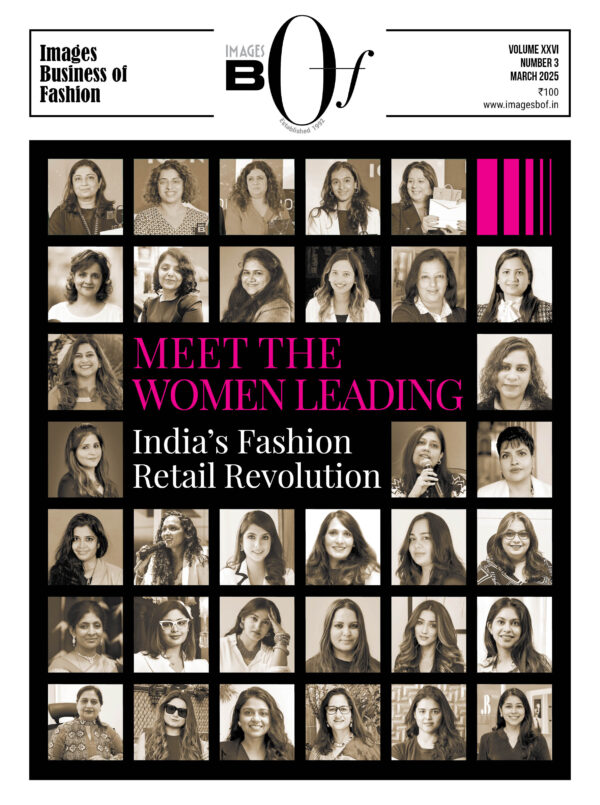During the pandemic, when buying fashion online became all the rage, retailers were (forcibly) ushered into an era of technology. Adoption and adaptation of technology became a no-brainer for brands and retailers who wanted to stay in business.
The use of technology has seamlessly integrated itself into the fashion retail industry in the post-Pandemic world and brands and retailers are realizing that when it comes to connecting with customers and boosting their bottom line, technology is in style.
Mobile apps, Big Data, new age inventory management and supply chain solutions are some innovations that most forward-facing brands have adopted in the last two years. IMAGES Business of Fashion brings to you chic technologies that can help you sharpen your fashion retail journey.
Generative AI
AI — the simulation of human-like problem-solving and decision-making within a machine — is redesigning fashion, with tools such as chatbots and personalized recommendations now commonplace.
After generative AI’s breakout year in 2023, use cases are emerging across creative industries, including fashion. Capturing the value of this transformative technology in 2024 will require fashion players to look beyond automation and explore its potential to augment the work of human creatives as per the BoF & McKinsey State of Fashion Report 2024.
Generative AI will change the way we design, produce, merchandise, cost, market, and possibly wear fashion. It could help optimize production floors. It could diversify marketing. 2024 will be the year to see how companies meaningfully implement AI within their own processes.
Augmented Reality
Augmented reality technology overlays digital objects over the real world, which users can interact with in real-time.
With 71% of consumers willing to shop more with brands that incorporate AR, this is a huge area of interest for fashion brands, which use the technology to create exciting, engaging experiences.
Virtual Reality & The Metaverse
Recent research shows that VR has immensely positive impacts on learning and understanding. Meta – is an immersive, 3D, interconnected virtual environment that is far more engaging and experiential than websites – is combining its market dominance in the Metaverse with insights it’s garnered about how VR can enable more effective learning to solve a core retail problem: employee engagement, training and retention.
Users can use virtual changing rooms to try on different outfits on their customized avatars and purchase clothes based on what looks good – a far cry from just a size selection on a regular e-commerce website. For retailers, the Metaverse means access to a huge amount of data harvested from customers – popular styles, trending colours etc. This will also help the fashion retail industry in reducing the cost and waste generated from manufacturing as well as returns.
READ MORE: Pixels to Runways – How Metaverse is Reshaping Fashion Retail
The Gamification of Fashion
Fashion brands are tapping into the multibillion-dollar gaming industry by teaming up to attract a younger and more engaged gamer audience, offer immersive experiences and drive technological innovations.
Gamification elements, such as virtual try-ons, interactive shopping experiences, and digital fashion shows, can enhance the engagement level in fashion retail, making the shopping process more entertaining and memorable.
Companies like Tommy Hilfiger, Dolce & Gabbana and Ralph Lauren are launching gaming-related initiatives, including styling games, e-sports collaborations and collections aimed at gamers, to tap into the immersive and interactive nature of gaming and connect with Generation Z fashion fans.
Recently, Louis Vuitton partnered with Riot Games to design a League of Legends Capsule Collection. The collection presents the game’s theme across T-shirts, sneakers, pants, bags and select items with price tags as low as US $ 170 up to a US $ 5,600 leather jacket. Epic Games collaborated with Japanese fast-fashion giant Uniqlo to create a new apparel collection inspired by Fortnite which was a massive success.
3D Design & Prototyping
3D printing has the potential to bring about significant positive changes in the fashion retail industry by promoting sustainability, customization, and innovation. It allows for on-demand production of customized and personalized clothing items, aligning with the growing demand for unique and personalized fashion. Designers can create prototypes quickly and easily, allowing them to test and adjust their designs in real-time. This accelerates the product development cycle, leading to faster turnaround times from concept to market.
It also opens up new possibilities for designers to explore innovative shapes, textures, and structures, leading to a more diverse and creative range of fashion products. At the same time, 3D printing enables a more sustainable approach by producing items only when needed, minimizing overproduction. It also helps simplify supply chains by decentralizing production. Instead of relying on centralized manufacturing facilities, 3D printers can be strategically located closer to the end consumer.
3D printing enables the use of a variety of materials beyond traditional fabrics, including plastics, metals, and even bio-materials, opening up opportunities for sustainable and eco-friendly materials, contributing to the industry’s efforts to adopt more environmentally friendly practices.



